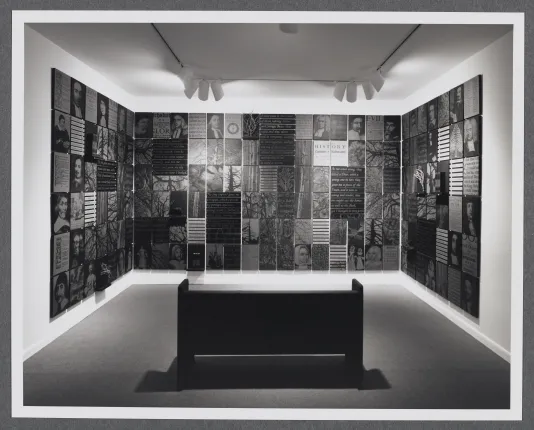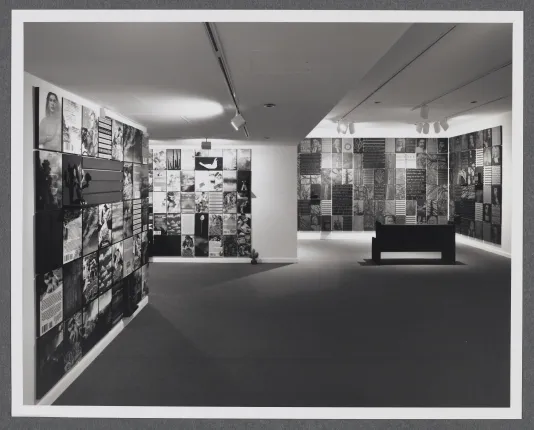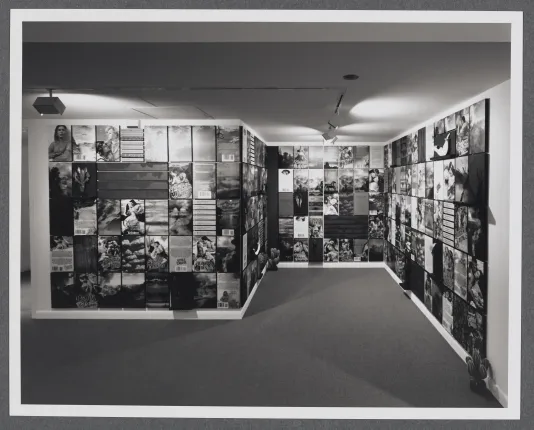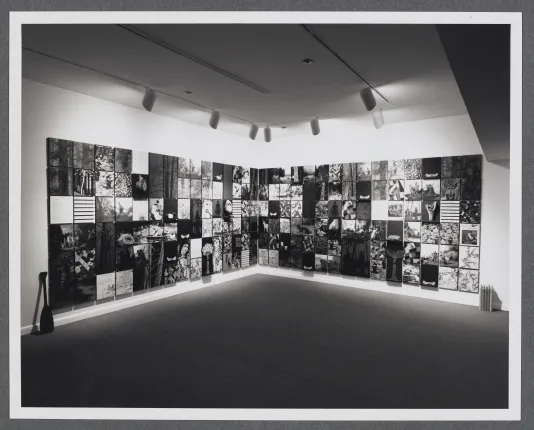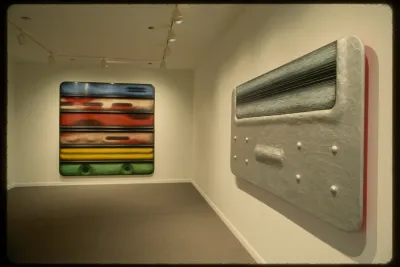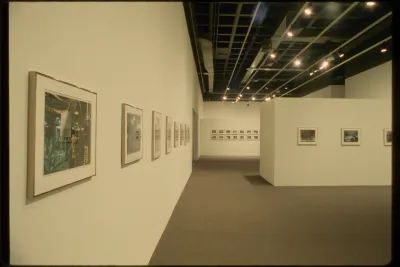Installation view, Deborah Small: Our Bodice, Our Selves, MIT List Visual Arts Center, 1992.
Deborah Small: Our Bodice, Our Selves
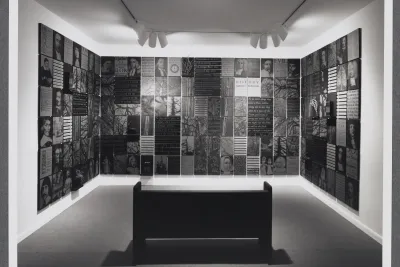
San Diego-based artist Deborah Small creates a three-part, floor-to-ceiling “browsing room,” composed of texts and images drawn from two forms of popular American literature.
The installation draws upon the first literary genre unique to the European settlers of America and particularly inspires by the “New World” and its hazards – the “Captivity Narrative.” The artist juxtaposes illustrations and texts from this period with those of a popular contemporary form, the historical romance or “bodice ripper” novel, to expose particular notions of gender and race relations, past and present. Small reveals the parallels between these two seemingly disparate genres in terms of the shared sexist and racist stereotypes “ which have been codified in the tales and potboilers of an imperialist civilization.”
Accounts of the abduction of a European woman by a “savage” originated with the Puritan experience of the real and imagined hostilities of the new continent. One of the first of these, the focus of one major wall in the exhibition, is the kidnapping of Mrs. Mary Rowaldson by the Indians during King Philip’s War in 1676. Redemption Rock along Route 140 in the town of Princeton, Massachusetts commemorates the place of her ransom to this day. The contemporary steamy romance continues in fascination with the dark, non-European “other,” as an embodiment of the fears and fantasies projected onto women. Small’s visual clichés include hackneyed imagery, blatantly suggestive color, and loaded “purple” prose.
As Madeleine Grynsztejn, Associate Curator at the San Diego Museum of Contemporary Art, has written in the catalogue which accompanies the exhibition, “Whether the subject is Indian or infidel, the fictive terrain of America’s Old West or of the recent Middle Eastern Desert Storm, the same narrative structures and cultural archetypes govern our readings of events, of history: the patriarch as righteous protector, the barbarous and swarthy villain, the innocent women and children in a foreign, inhospitable terrain, the stock characters are all in place.
